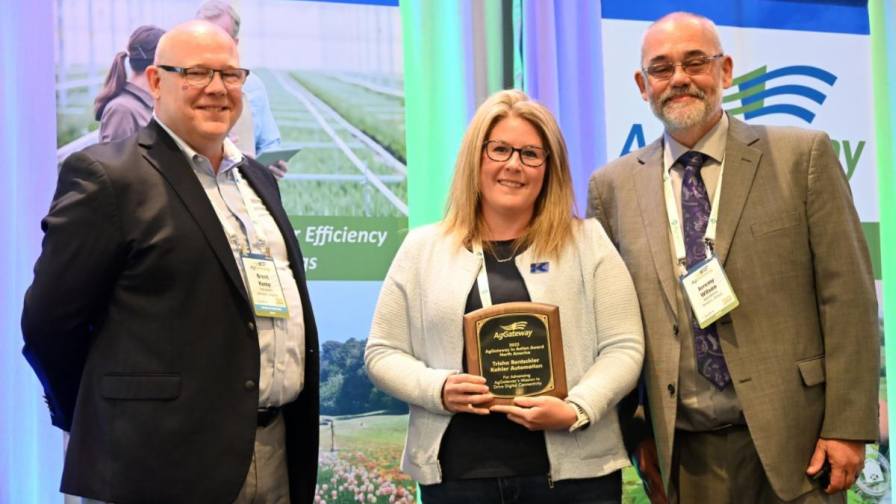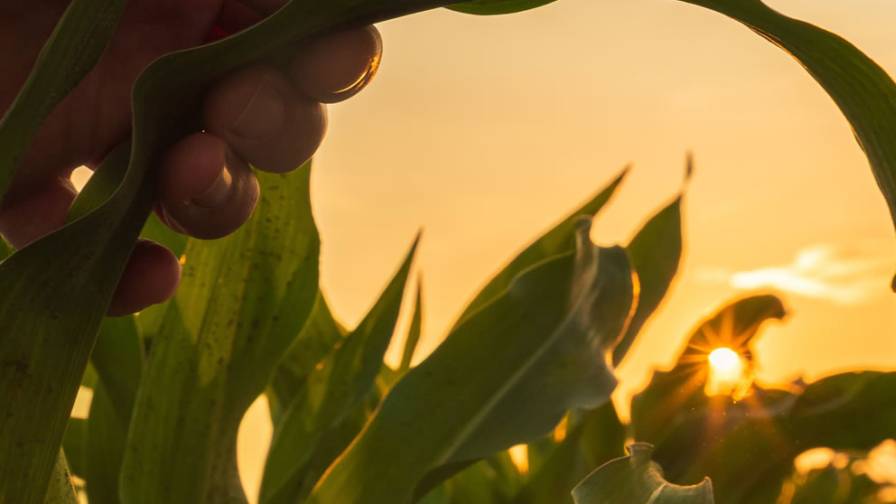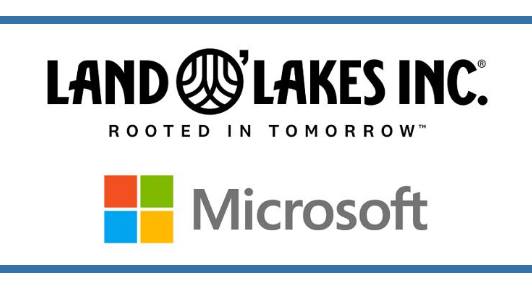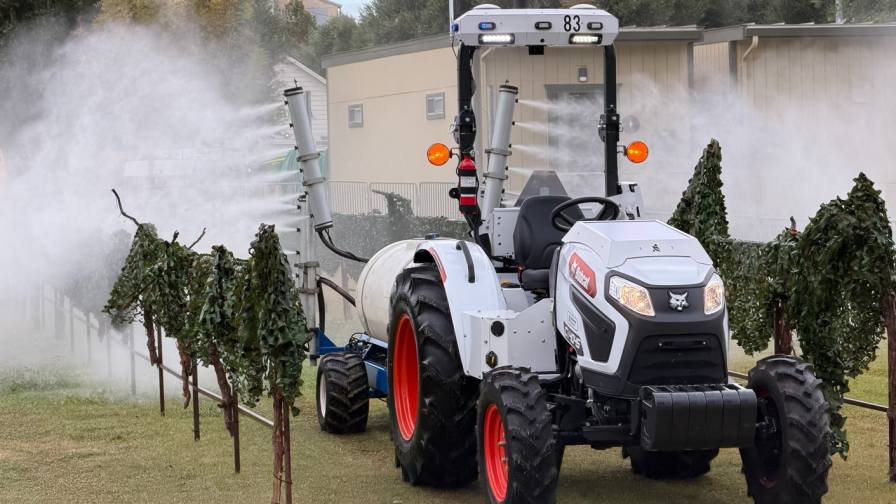
A driverless rig runs its demo at FIRA-USA. Many growers see new technology as being a solution to a nagging labor problem in crops of all kinds.
It’s a sunny day in California and FIRA’s robot rodeo is in full swing. A driverless tractor is pulling a spray rig through a vineyard mock-up to show how it can handle the turn rows and shut on and off as needed. Nearby, a machine from NIQO Robotics is showing it’s ability to weed and thin lettuce — manual work that’s costs growers millions every season.
Venture capital applied to ag tech has declined more than 60 percent since its peak in 2021, according to PitchBook. That drop may have thinned attendance here, but not the enthusiasm among those experienced with ag start-ups. These veterans say the ones folding probably started as “tourists” in farm country and stayed that way.
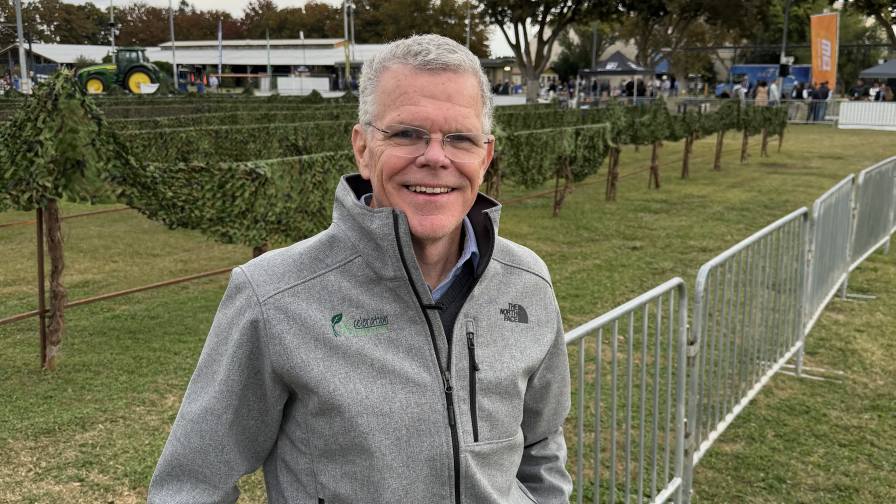
Listen to Real Growers. Allan Fetters, here seen at FIRA-USA, counsels start-ups to gain year-on-year experience with their product at field level.
“There are a lot of smart people who want to bring innovative tech into the ag market,” says Allan Fetters, with his eyes skyward, watching a big drone carry a 395-pound weight aloft to demonstrate its work payload. Fetters, the founding principle of AGceleration Advisory Service, also grows almonds and pistachios in the Central Valley and has advised several ventures bringing their solutions to crop production.
“Why is it those really smart people struggle with understanding what farmers face at field level?” he smiles as he repeats my question. “Because they don’t spend enough time on the farm. They don’t listen to real farmers.” He adds that they often are looking for the proverbial hockey stick in sales performance, “and that just doesn’t happen in agriculture.”
MORE BY K. ELLIOTT NOWELS
FIRA-USA has its origins in France and the Global Organization for Agricultural Robotics (GOFAR). The U.S. version is a joint effort of University of California at Davis, Western Growers Association, and a collection of commercial players.

A Tight Fit. Walt Duflock handles a video interview at FIRA-USA, an event he shepherds as part of carrying out his mission for Western Growers Association.
“Oh man. I gotta tell you, I have played in Silicon Valley for 30 years, and this (agriculture) is the toughest space I’ve ever seen, right?” says Walt Duflock, standing near FIRA’s demo fields. FIRA is an event he helped to create in his role of senior vice president for innovation of the Western Growers Association. “The fit that growers require between their problem and your solution is as tight as you will ever see it. And the paces they put agtech startups through, it’s no wonder it takes 7 to 10 years to get a startup to the commercial scale-up phase.”
Duflock boils it down to a three-hurdle race for agtech startups: 1) Does the product work? 2) Does it work with no unintended consequences? And 3) Does it work in a way that integrates with a grower’s system and economic goals?
“The ROI for the grower is critical,” he says. “At Western Growers, we work with growers to make sure all that math is run and those numbers are known. Before they write the check we tell them, “here’s what it looks like; here’s when it’s likely to pay for itself.”
“Let’s not forget, we’re in agriculture,” says Paul Welbig of New Holland. “It’s hyper localized with lots of different crops and different regions. So you have to be able to configure and purposely build for that specific crop and circumstances.” Like Fetters, he also suggests more honest engagement at field level.
“A lot of times we fail to listen enough to the challenges that farmers are facing,” he says. “I would encourage those that are just getting started in this space to engage with farmers in the field and really spend the time to understand their challenges. Start by asking questions. Care about what you are trying to help them solve. Be genuine.”
Welbig, who was instrumental in developing Raven’s precision ag technology, says the power of a compelling story can also propel tech adoption forward in a way that collapses the adoption curve and gains buy-in faster.
“The power of storytelling, to share examples and experiences from the field, is very important,” he says. “There can be this moment when they hear it from another farmer’s point of view that builds their trust and confidence. The ability to tell it in a compelling way is very powerful in helping others understand the benefits of new tech adoption.”
All of this resonates with me as I move about the show with my sons, hearing stories of the good, the bad and the ugly, from the bleeding edge of agriculture’s innovation. In the ’90s, it was my privilege to visit dozens of farmers who were seeing yield monitors and geo-referenced yield maps for the first time. When I rode along with them in the combine, you could see the light bulbs coming on in their heads.
Capturing their stories and sharing with others helped more farmers try the technology, get through the hard part, and reap the reward earlier. Farmer stories of successful adoption share the truth of the matter in a way that seems hard to get across otherwise. I’m grateful the next generation sees the value of applying their energy to that mission.
“There’s a lot of cool tech here,” says my son Cody, now a veteran of filming the planting, growth, and harvest of a variety of crops across the country. “But you can’t expect a grower to move ahead in their adoption until they actually see how it works in the field and fits into their system. That’s my mission when I shoot out there. Get whatever shots I need — aerial, equipment running, grower interviews — to illustrate the truth of it working.”
Fetters counsels that understanding the fact of the matter at field level is key to gaining the traction these companies seek — and it’s going to take year-on-year effort, being out there season after season, and sharing real results.
“Ground truthing your offering is of paramount importance,” he says, adding that you’ve got to be able to put numbers to it and be able to show the benefit. “Financial sustainability is the key thing that every farmer is looking for,” Fetters says flatly. “Their question is “how do I survive? Will these new solutions help me, or will they just add cost?”

